part of the stretched leg
middle channel
119
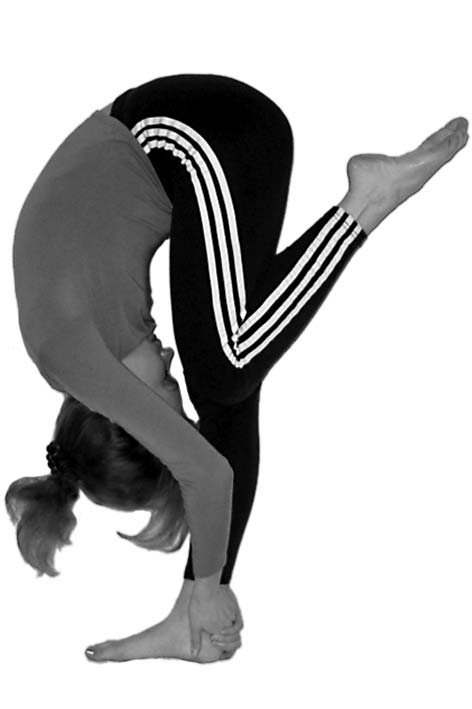
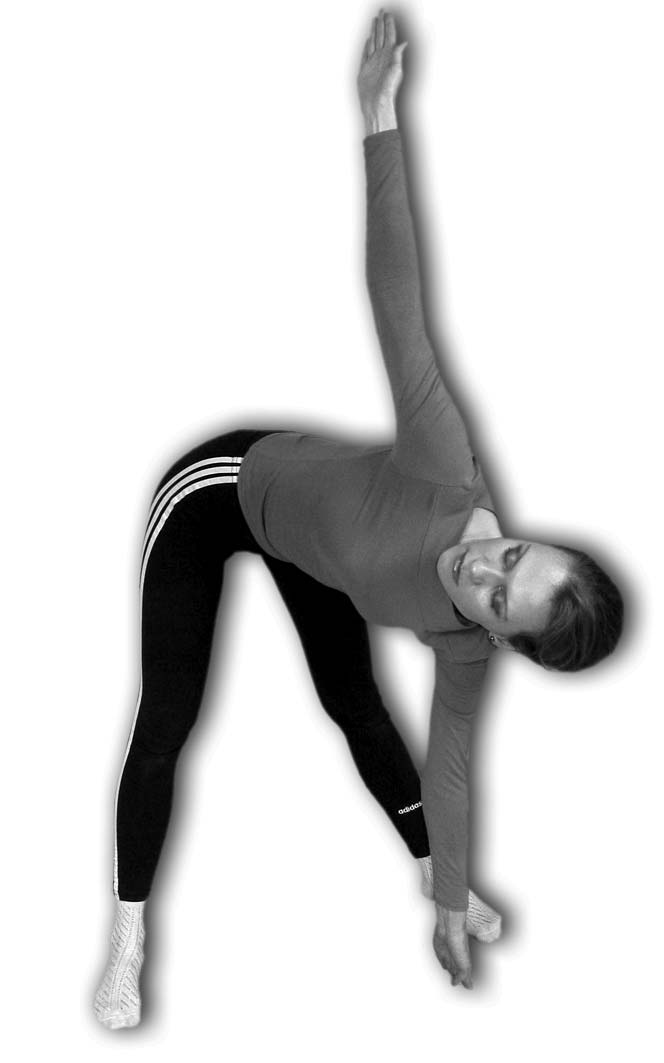
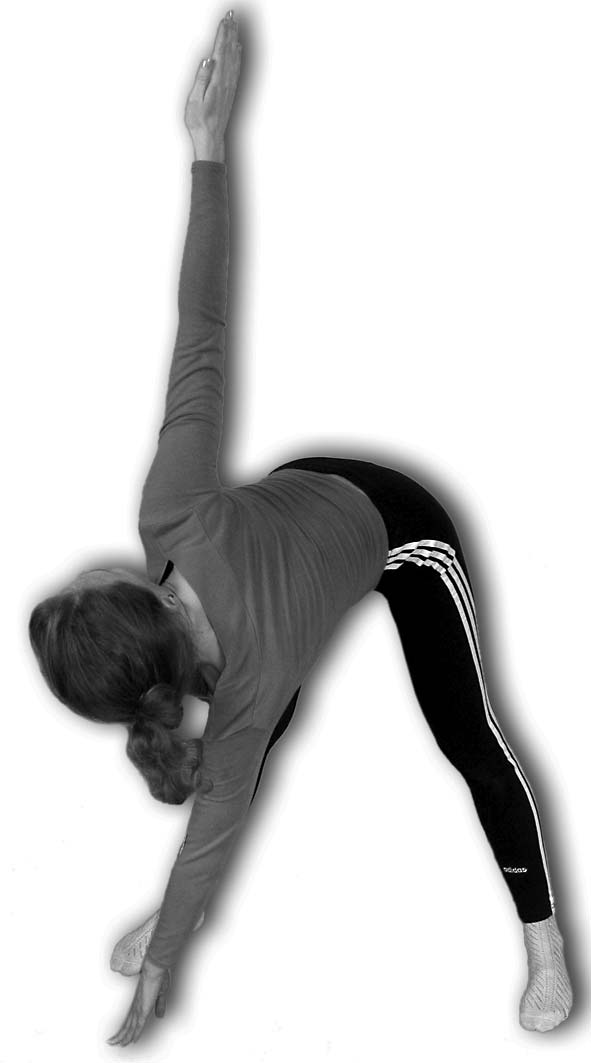
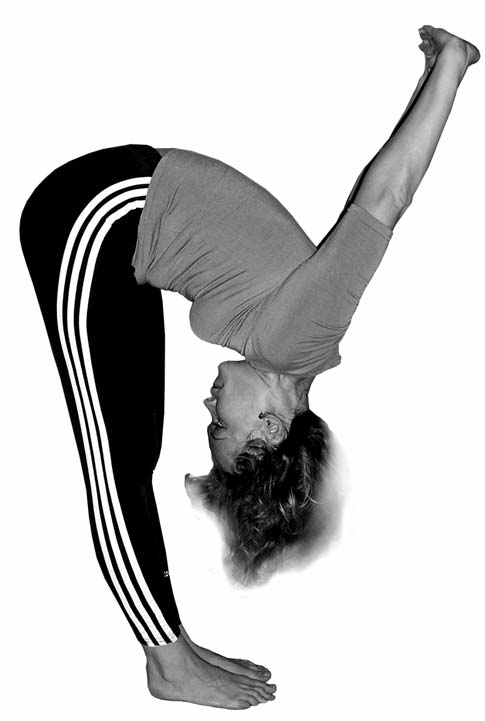
. Safronov. Yoga: Physiology, Psychosomatics, Bioenergetics
Asanas
similar to Рadahastasana
Dvikonasana
(double angle pose)
Intensifies the influence
on the posterior middle
channel
Padahastasana with
a bended knee
Intensifies the influence
on the channels of the
bearing leg
Trikonasana
and its variations
Trikonasana. First variation
The hand is put near the
same foot. The asymmetry of
poses is done by the pelvis
Trikonasana.
Second variation
The hand is placed near
the opposite foot
The inside criteria of doing these variations of Trikonasana cor-
rectly are the same as for the basic pose, described above. The only dif-
ference is that the strain is done only by one leg (to which the bending
is done).
120
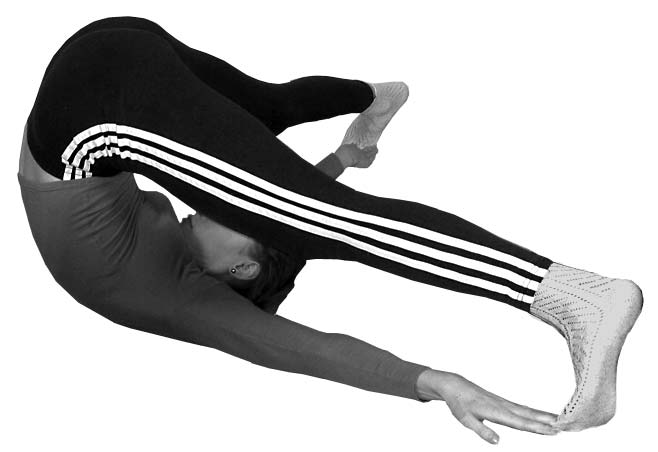
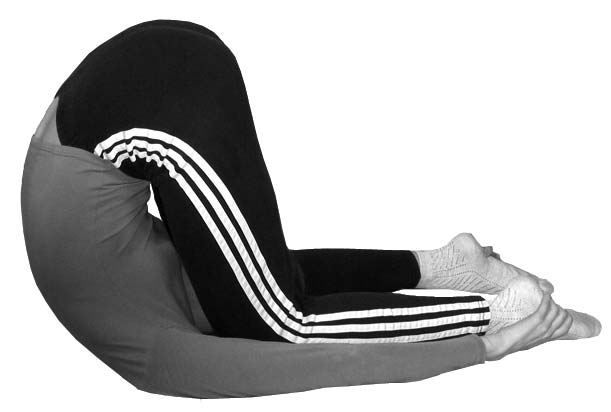
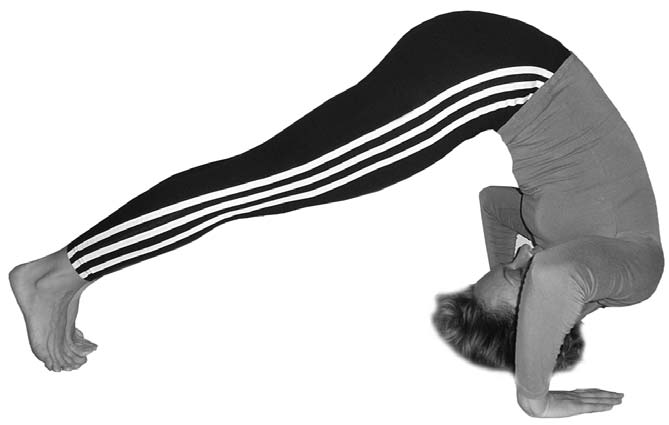
Advanced exercises and their energy influence
Asanas
similar to Нalasana
Urthvakonasana
Chakrasana kriya
(inverted angle pose)
(moving wheel pose)
Karnapidasana
(knees near ears pose)
«Artha»-asanas
(asymmetric postures,
influencing side
meridians)
Asymmetric poses activate peripheral channels (lying aside from
the central line and parallel to anterior and posterior middle merid-
ians). Often the names of these poses have a prefix «artha-», meaning
«half». It doesn’t mean that «half-poses» are easier to perform than
their complete versions. They just have a specific influence on one
half of the body.
121
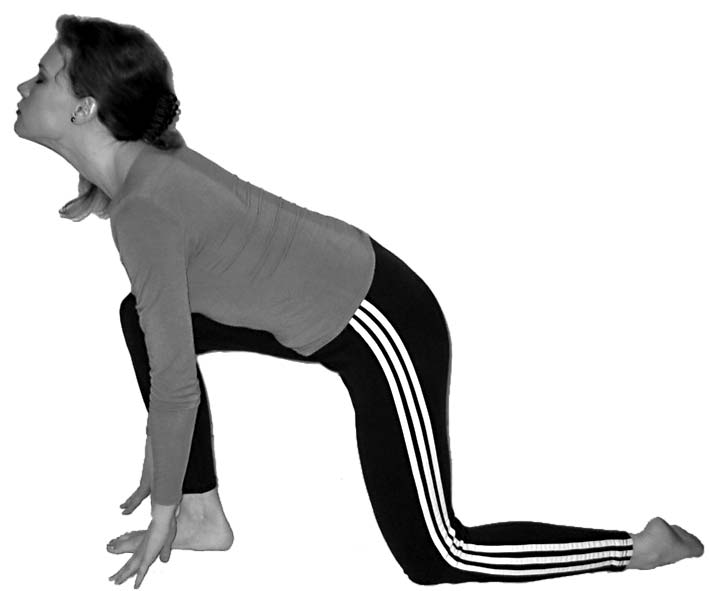
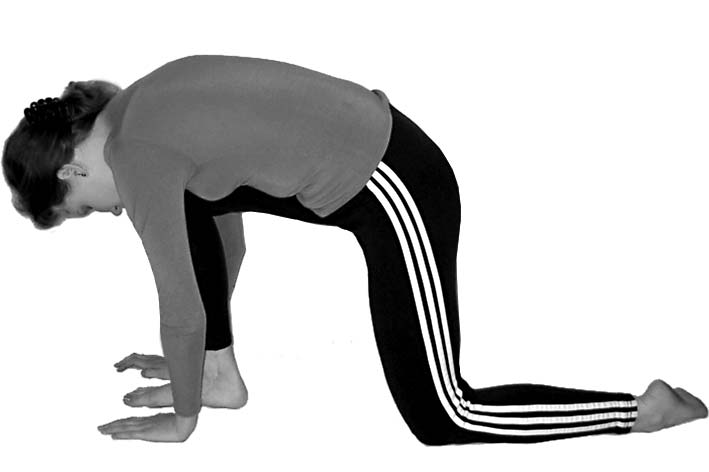
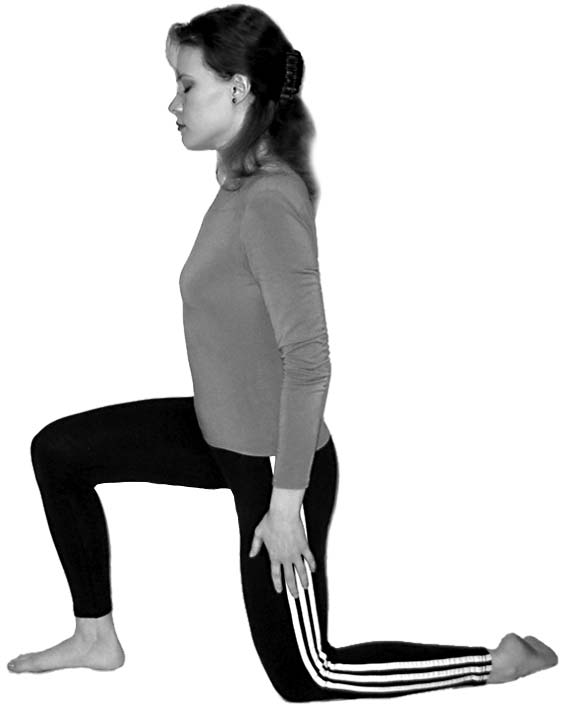
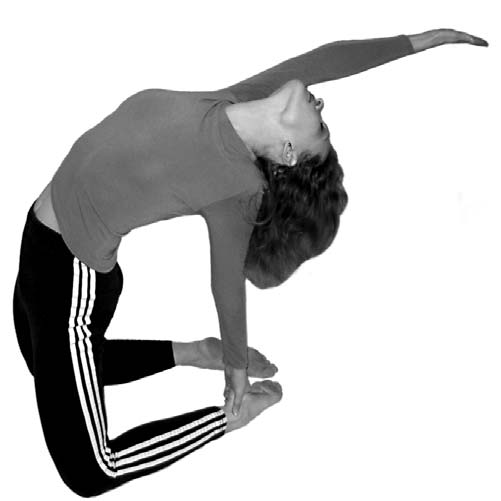
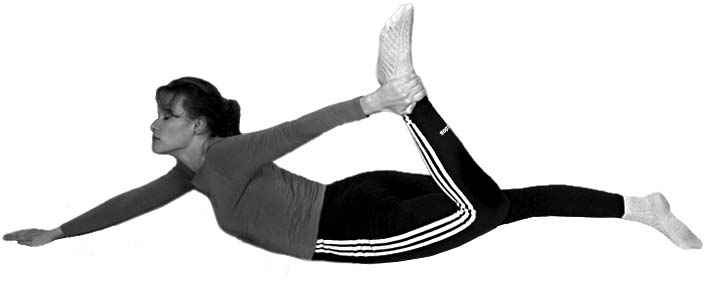
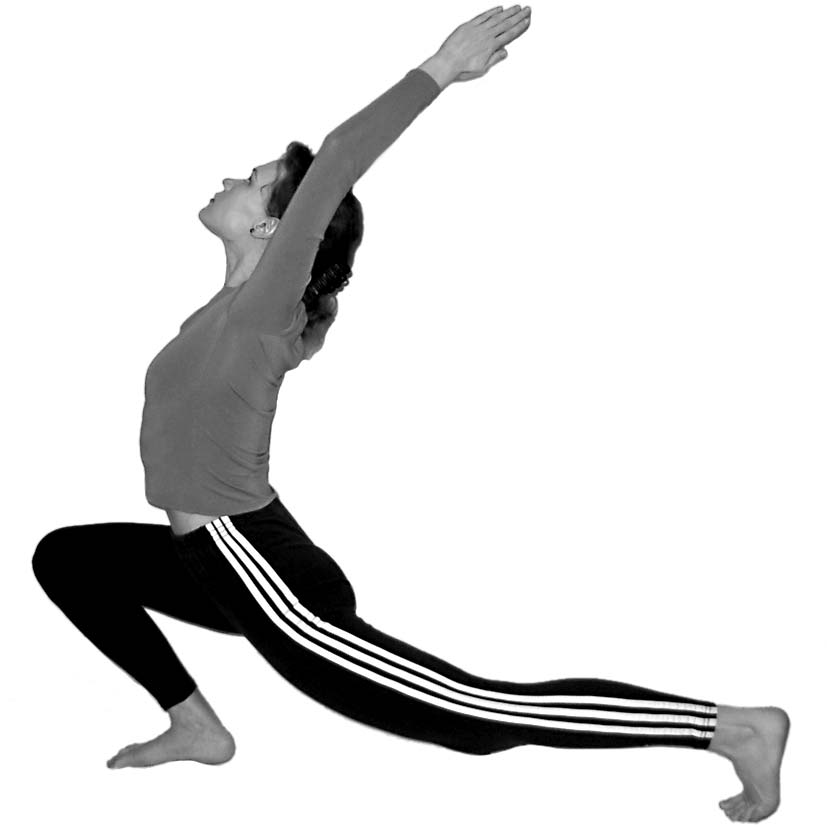
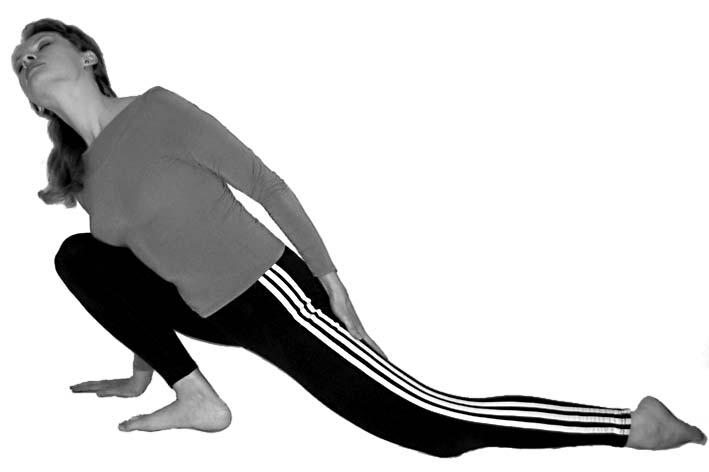
. Safronov. Yoga: Physiology, Psychosomatics, Bioenergetics
Athabhujangasana
Phases of entering
Athabhujangasana
Arthanurasana
Arthaushtrasana
Virasana (hero pose)
122
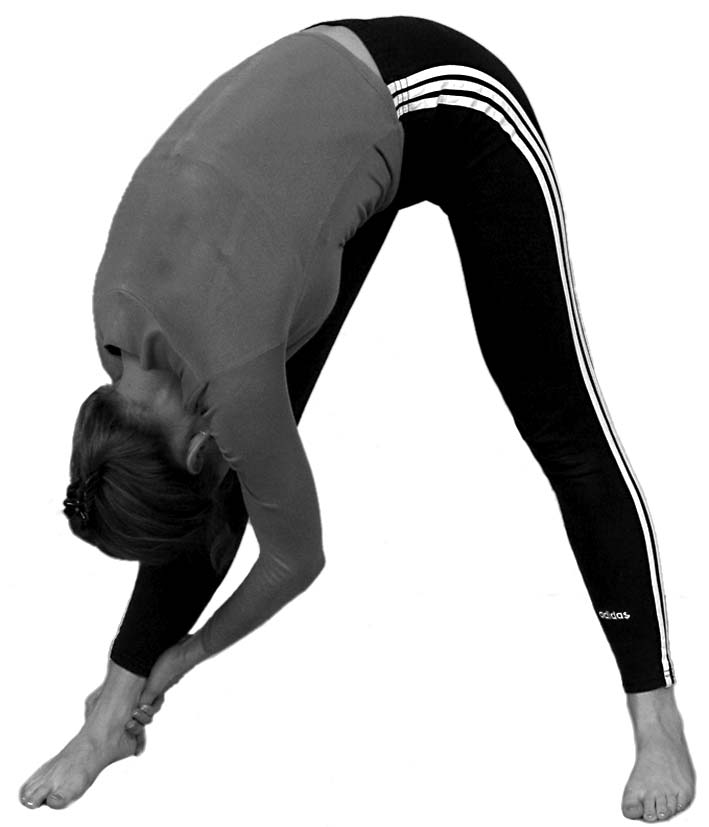
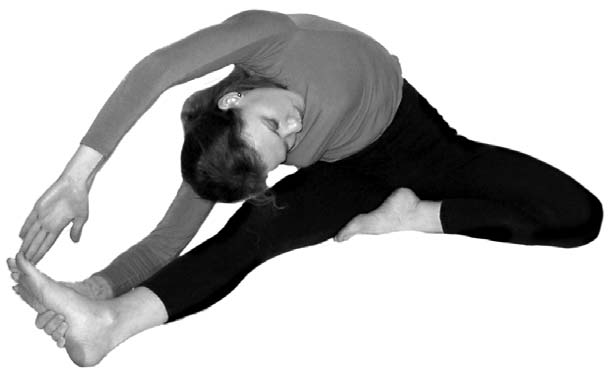
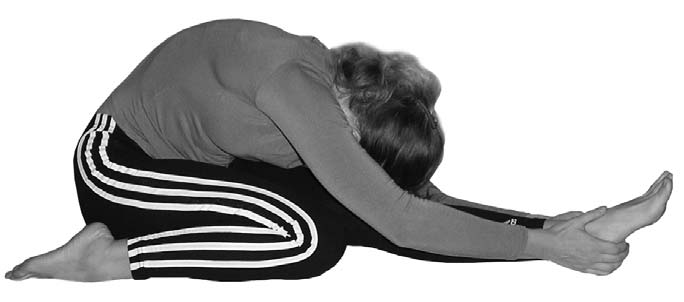

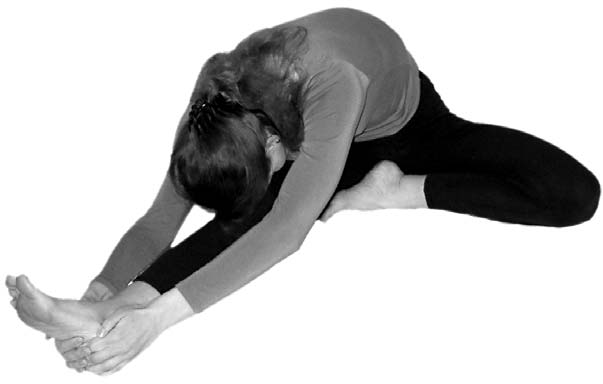
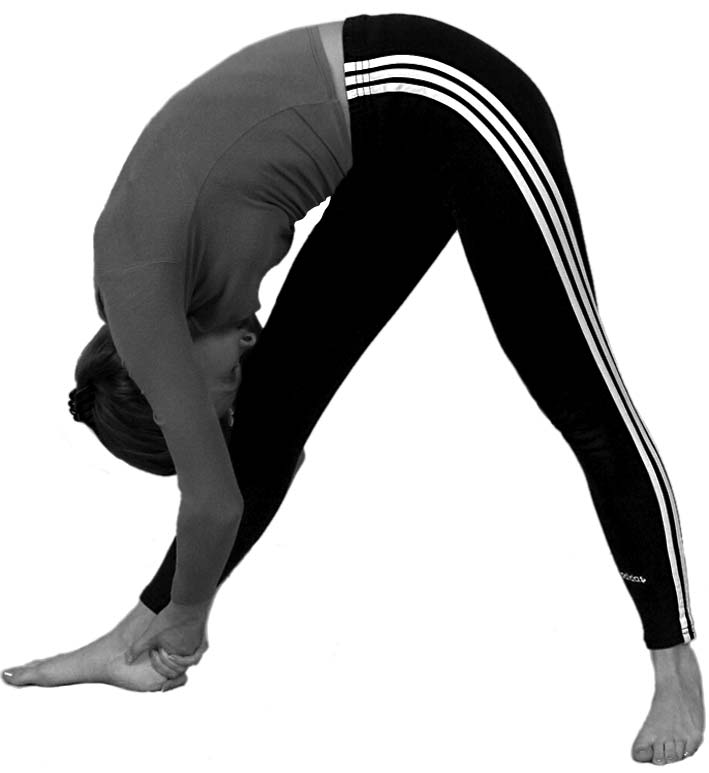
Advanced exercises and their energy influence
Arthapashimottanasana
and its variations
Djanu-sirsasana (head to
Djanu-sirsasana (head to knee
knee pose). First variation
pose). Second variation
Triang mukhapada
Athabaddha
Pashimottanasana
Padmapashimottanasana
Arthapadahastasana
and its variations
Parshvatonasana (stretching to Bhujangasana pose)
NOTE. Despite the formal resemblance, these poses activate completely dif-
ferent channels.
123

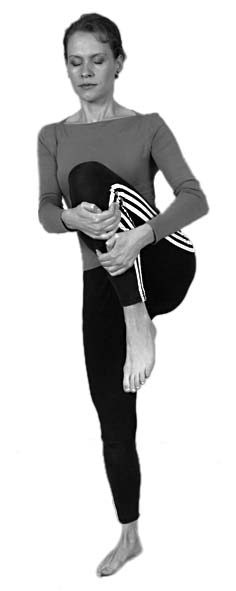

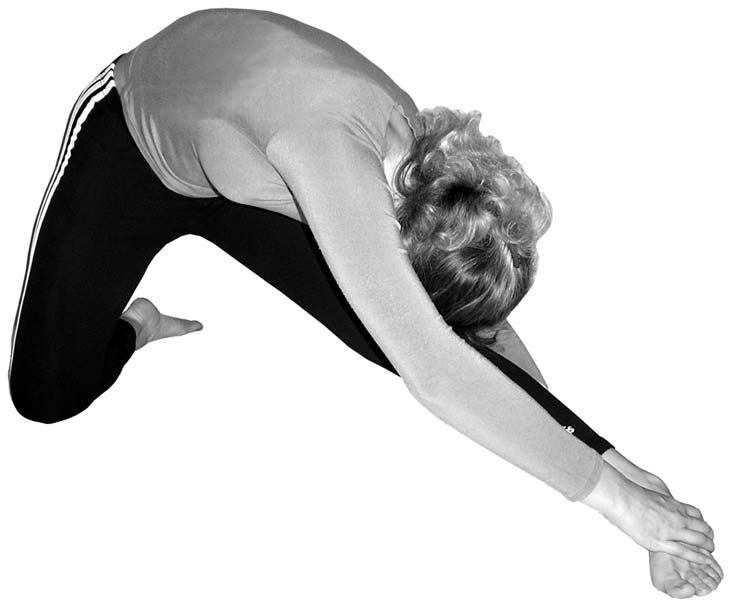
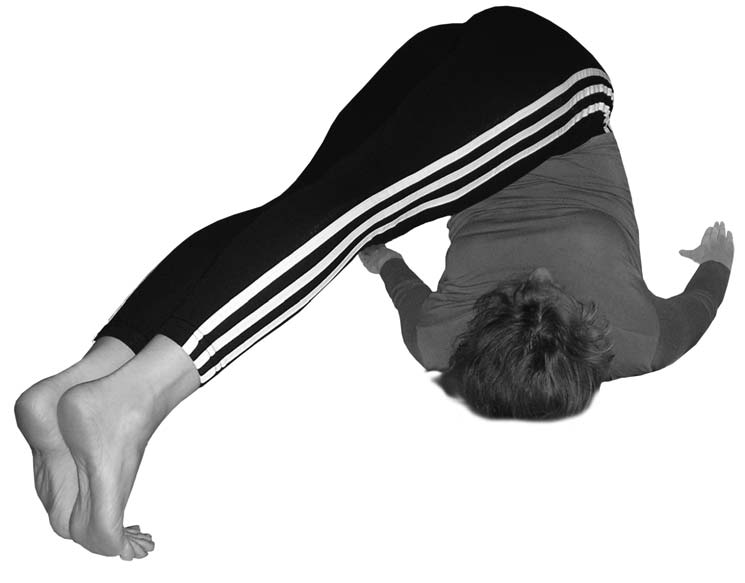
. Safronov. Yoga: Physiology, Psychosomatics, Bioenergetics
Sivanatarajasana
Tadasana
(Siva-Nataraja pose)
Mistakes in doing
Tadasana
Bearing-out the
hip closes the side
meridian
Parsva Halasana
(Halasana with a turn)
Parighasana
(crossbar pose)
124


Advanced exercises and their energy influence
Inverted poses
Viparita karani
(back movement)
Viparita karani is a very dif-
ficult pose. To do it correctly, one
must have a flexible pelvis zone.
Actually it is a half-inverted, half-
strengthening pose.
Starting position. Lying on
the back.
Technique. Lift your feet in
the way that your toes reach the
level of your nose, pelvis isn’t tak-
en off the floor. The back must be
straight, legs are also straight at a
angle of approximately 70º at your
body, the coccyx lying on the floor,
no «arching» in the back. It’s a half-
inverted strengthening pose.
Effect and action. This pose tightens the field in the anterior part
of Svadhisthana, pushing the energy up the anterior-middle channel.
This effect is achieved, only if the back is perfectly straight and horizon-
tal. Viparita karani does the same effect on women as nauli on men —
makes the sexual energy (its etheric constituent) rise. It can be useful as
a way of curing frustration, caused by sexual dissatisfaction.
Mistakes in doing
viparita karani.
The back and the pelvis
are taken off the floor
125


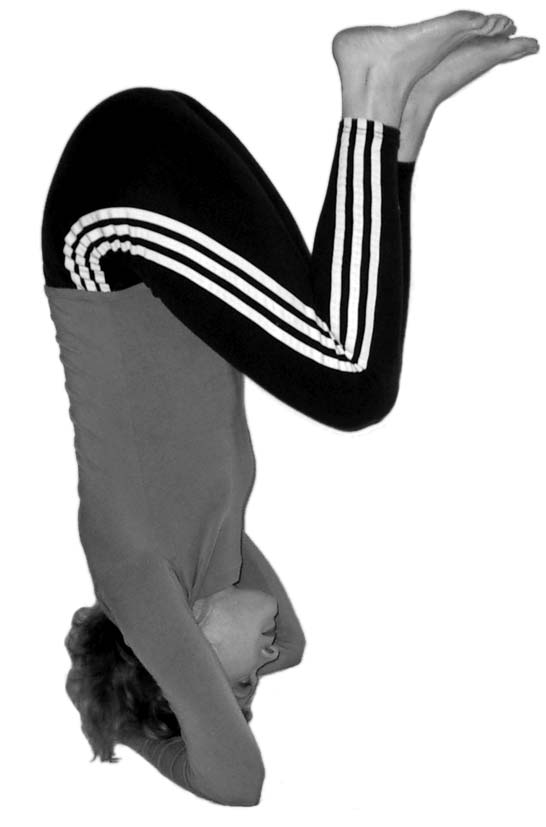
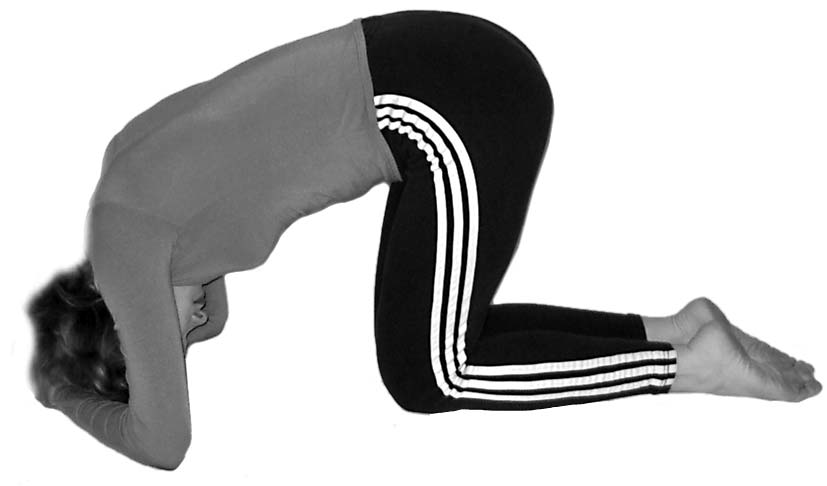
. Safronov. Yoga: Physiology, Psychosomatics, Bioenergetics
Sirshasana
(standing on the head)
Sirshasana is one of the most important pos-
tures in yoga, rejuvenating all the body. However it
should be practiced only after all the problems with
neck osteochondrosis are cured (the best practice for
it are sarpasana and pivoting poses), because other-
wise it can provoke vertebra jamming.
Sirshasana isn’t always easy to do. To master it
one shouldn’t be afraid to fall on the back, and for
this it’s helpful to practice somersaults.
Starting position. In vadjrasana rest on the top
of the head, put your hands on the nape (fingers
overlap, but aren’t crossed).
Technique. Straighten you back, feet coming to
your head, unbending your knees. Take your feet off
the floor and carefully straighten them.
Effect and action. Sirshasana redistributes the
blood in cavities of the body and makes it come to
the head, if the neck isn’t jammed in the exercise. The
feeling of energy «coming» into the head is the sign
that asana can be finished. Besides in this posture the
muscles, responsible for balance are also energized.
Which group of them — depends on the bearing
area, i.e. on how hands are placed (for more details
see chapter «Asanas boosters»).
Phases of entering Sirshasana
126

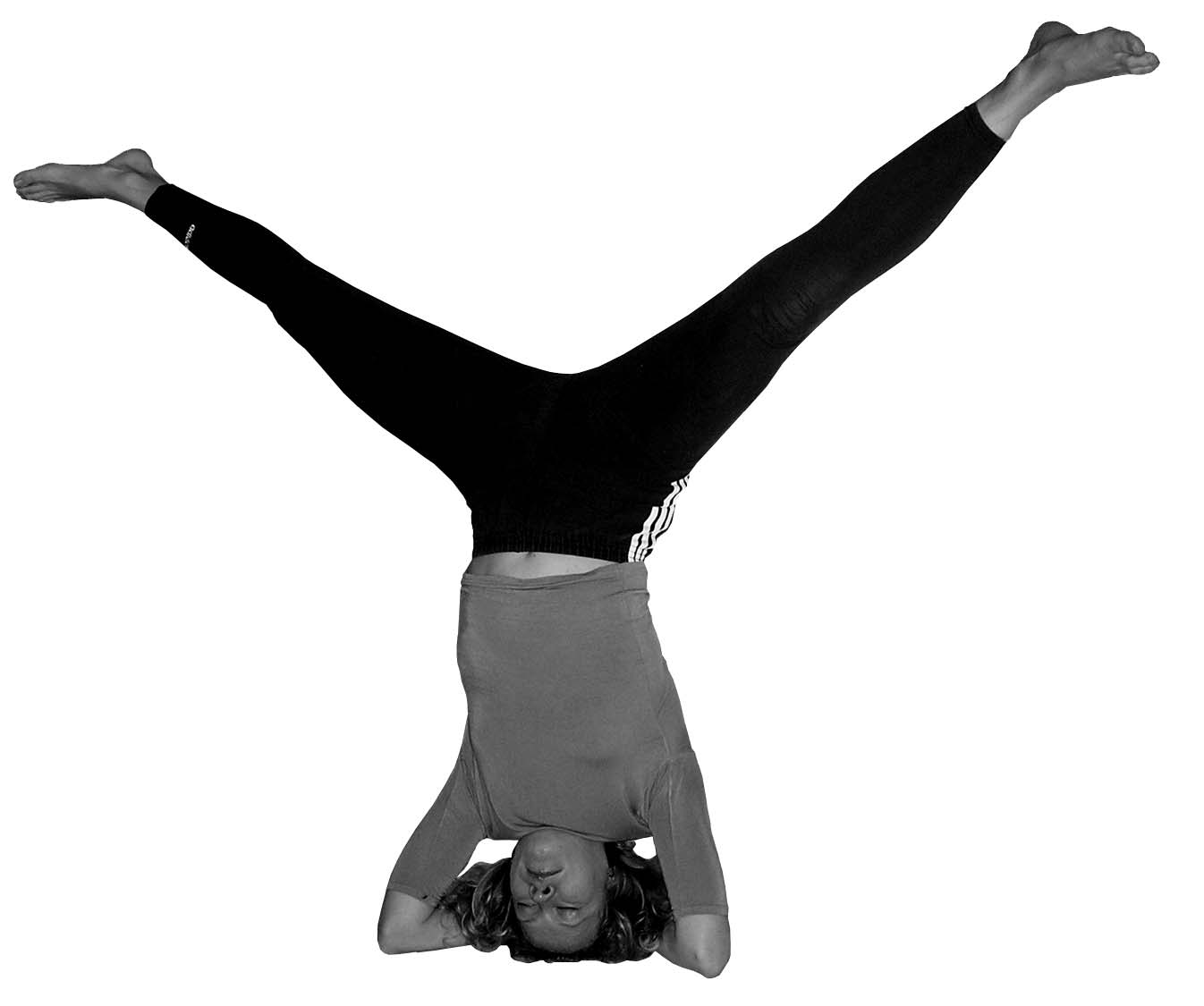

Advanced exercises and their energy influence
Sirshasana’s variations
1
2
Variations of Sirshasana:
1 — Kapalasana (Sirshasana
with arching); 2 — Sirshasana
with legs apart; 3 — Sirshasana
with pivoted spine
3
Squeezing out asanas
Maiurasana
(peacock pose)
Maiurasana is a squeezing out pose that should be done with the
straight back. The energy you squeeze out from the lower part (Mani-
pura and pancreas) moves like in Bhujangasana. It can be replaced: like
a stretching pose — by bhujangasana; and like a squeezing pose — by
lying face down on the wrists under the belly (which is a good help, if
you overate). If you can’t do asana well, better don’t do it at all.
127
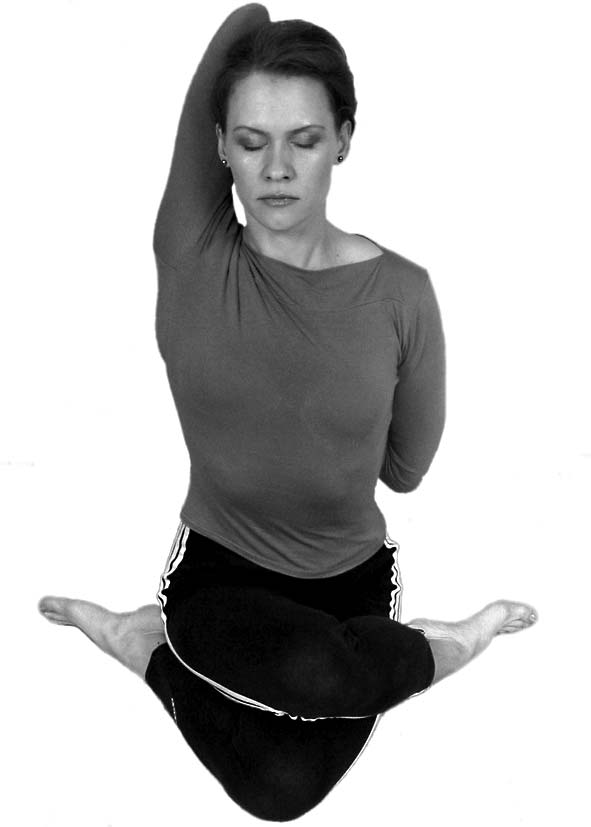
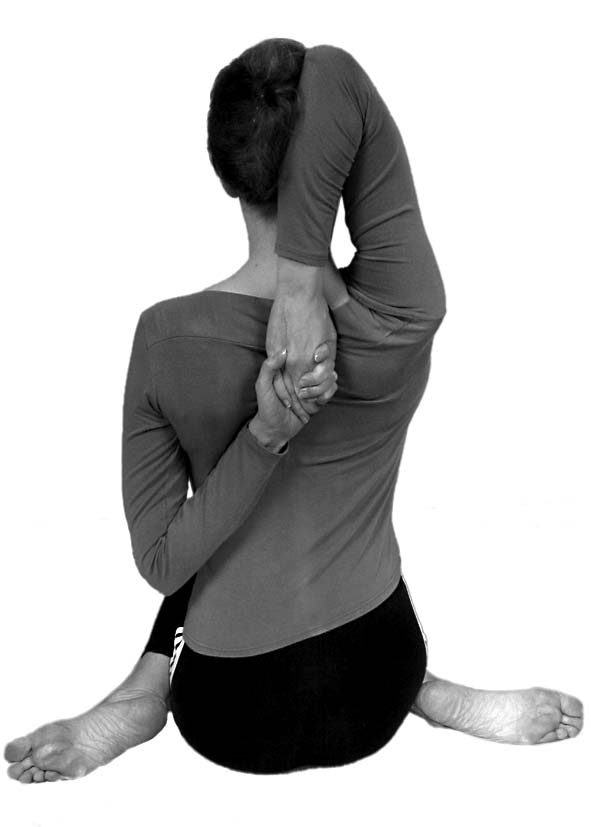
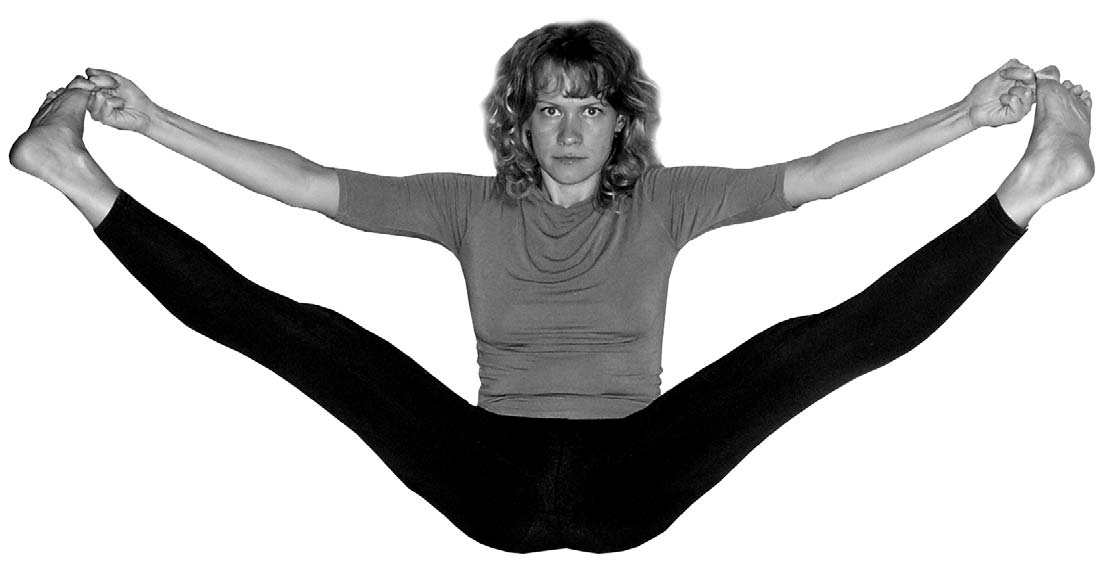
. Safronov. Yoga: Physiology, Psychosomatics, Bioenergetics
Gomukhasana
(bull’s head pose)
Advanced
strengthening poses
Merundandasana
(mountain Meru or the vertebral column pose)
128
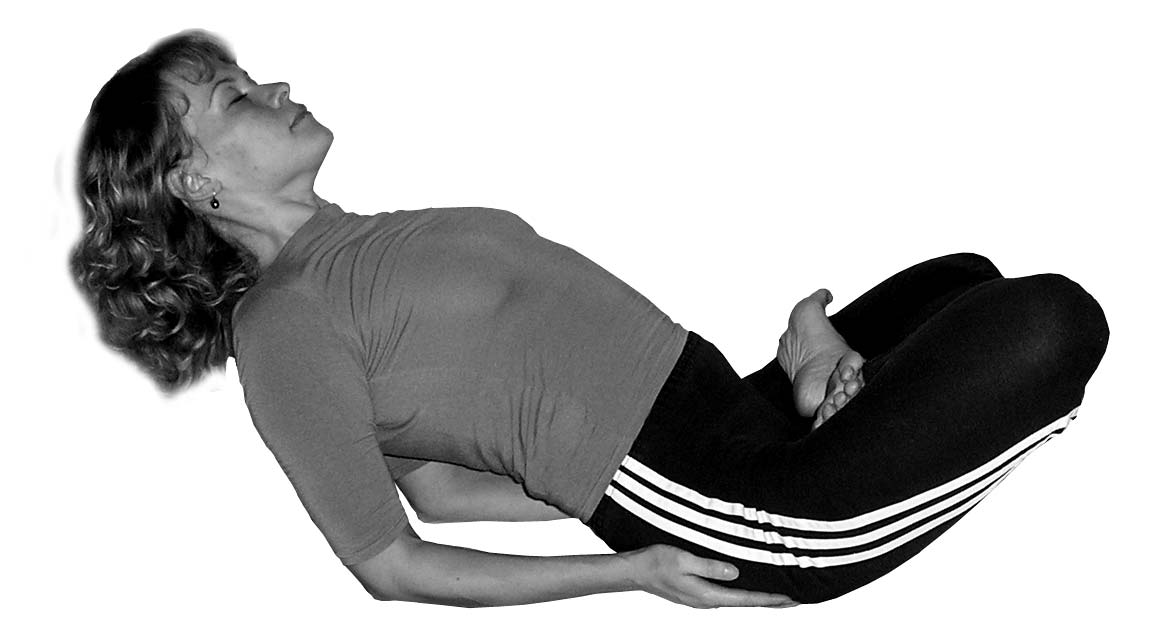

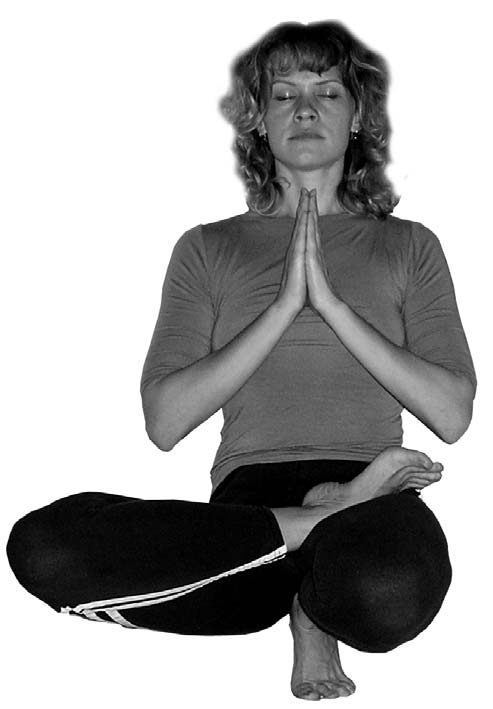
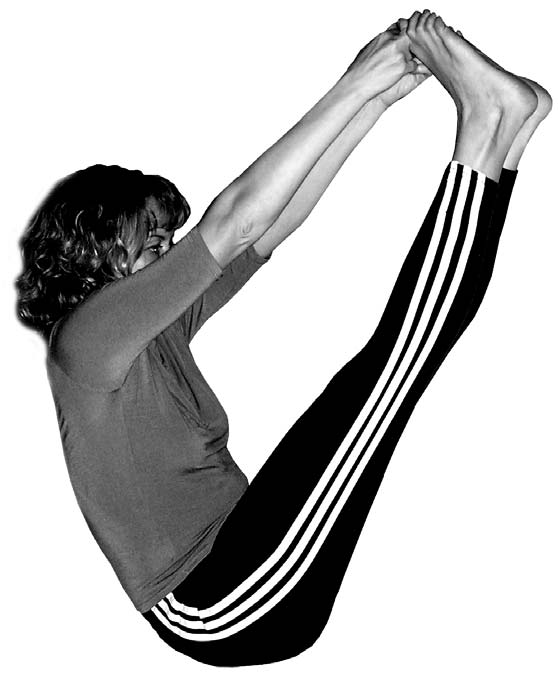
Advanced exercises and their energy influence
Niralamba-Pashimottanasana
Tolangulasana (scale pose)
(stretching back without
support pose)
Equilibration
poses
Padangushthasana
(tiptoe pose)
Tree pose
on one foot
129
. Safronov. Yoga: Physiology, Psychosomatics, Bioenergetics
Advanced pranayamas
Bhastrika and its variations
The physiological effect from Bhastrika can vary depending on
the position of the eyes, of the head, or by closing one of the nostrils
(asymmetric Bhastrikas). Hence there are six types of Bhastrikas.
«Standing» Bhastrikas
They differ by the position of the body, in which they are done.
The technique is the same, which is the common Bhastrika.
1. In standing position, hands in namaste, the head is straight,
eyes are open and focused on the point on the floor, situated in about
1,5 m from your toes, i.e. looking at the angle of 45º down.
ATTENTION! In this technique it’s crucial to squint eyes without moving
your head.
2. In standing position, hands in namaste, the head dropped
back. Eyes are open and focused between eyebrows.
ATTENTION! a) the head should be dropped back only by the neck, not
the back; b) posterior muscles of the neck must be relaxed.
3. In standing position, hands in namaste, the head and the
neck in relaxed djalanadhara bandha. Eyes are open and focused on the
wings of nose.
ATTENTION! The back of the neck must be stretched and the anterior part
as relaxed as possible.
4. Position like in 2, but open eyes are focused on the wings of
nose.
Remember, that after the intensive breathing of Bhastrika, it’s cru-
cial to do kumbhaka.
Effects and action. Like a basic Bhastrika, these variations provide
hyperventilation and the inside hydraulic massage. However different
positions of the head make it possible to control blood inflow and out-
flow to the head. Indeed the blood flows into the head by arteries, lo-
cated on the anterior part of the neck, whereas the natural (valveless)
drainage — through the venous system in the back of the neck. The
stretching of the relative zone makes the blood flow weaker and en-
hanced the blood inflow (in the third variation) or its outflow (the 2nd
and the 4th). This is training not only the vascular system, but also the
adapting capacities of the brain.
130
Advanced exercises and their energy influence
«Asymmetric» Bhastrikas
The action of asymmetric Bhastrikas relies on making airflow dens-
er by reducing the admission section of the airway, like in Akapalabhati.
First variation
Starting position. Like in Akapalabhati, i.e. the giving hand in
yoni mudra near the nose.
Technique. The breathing is done like in Bhastrika, but through
one nostril.
After finishing half of the cycle, change the nostril.
Second variation
The same as in previous, but inhale through one nostril and ex-
hale through another.
Bramari (the bee)
Bramari is a vibration pranayama.
Starting position. Any meditative posture.
Technique. Inhaling, hum with your nose, like a bee by tonality.
Exhaling (still by the nose), hum in one tone lower. In both cases there
must be a physical vibration in the skull (in different zones of the head).
Anuloma viloma
This exercise is one of the most important in coming from hatha
yoga to it’s more advanced levels. Nevertheless it should be mastered
gradually.
First step
Sit in a meditative asana. The giving hand in yoni mudra, the tak-
ing one — in dhiana mudra. Breathing rhythmically, close one nostril
after another by this scheme: inhale by the left nostril, exhale by the
right one, inhale by the right nostril, exhale by the left one. Men should
start by the left nostril, women — by the right one. Breathing rhythm
should be natural. The exercise should be done for at least 10 minutes.
Second step
Adding breath holds (see «Exercises with breath holds»).
Third step
Adding energy work (see chapter «Techniques of work with
energy»).
131
. Safronov. Yoga: Physiology, Psychosomatics, Bioenergetics
Advanced elements
of warming-up
At the advanced level or with the better physical development the
warming-up can be enhanced to become more efficient. First of all I
recommend to start with a self-massage (usual and a pointillage), and
after warming-up the joints to add some aerobic exercises, working out
the cardio-vascular system, and in addition to that some exercises to
warm-up viscera (bandhas and kriyas), voice warm-up (simhasana) and
dynamic complexes Suria Namaskar (in a sunny time of the day) and
Chandra Namaskar (especially good at a full moon).
Self-massage
The self-massage can include a contact and non-contact facials, mas-
sage of ears, head, neck, viscera of abdominal cavity, of legs and arms.
Warm-up enhancers
Those practitioners, who are used to all warming-up exercises,
can look at their fingers. There is a simple test: stretch your arms before
you, your fingers straight, and hold for some time. Gradually you’ll see
that some of your fingers automatically folder. Those fingers that crook
less are the less energised. So the respective meridians are weakened as
well. In this case, warming-up palms, you should pay special attention
to these fingers and musculotendinous meridians. An additional effect
can be achieved, if you clench the wrists or make a mudra during the
warm-up. The warm-up should be done with Muladhara set-up, i.e.
with the feeling, working out tendons.
The simplest way to enhance the legs warming-up is to raise legs
higher than usual. The tension rises according to the angle. Another al-
ternative is to draw the leg aside, turning it — in this way other mus-
cles are worked-out. Depending on the angle of drawing the leg, we
can activate different musculotendinous meridians.
Bandhas and kriyas
Bandhas and kriyas are done either as separate exercises or to-
gether with asanas and pranayamas. They can also be used as warm-up
elements. Because they work with viscera, it’s logical to do them in the
end of warming-up («from periphery to the centre»).
132
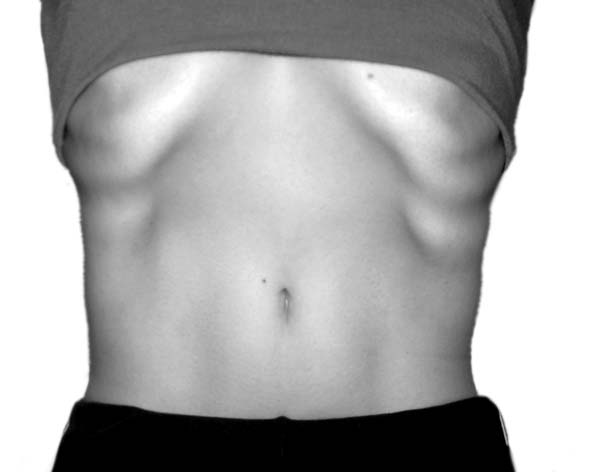
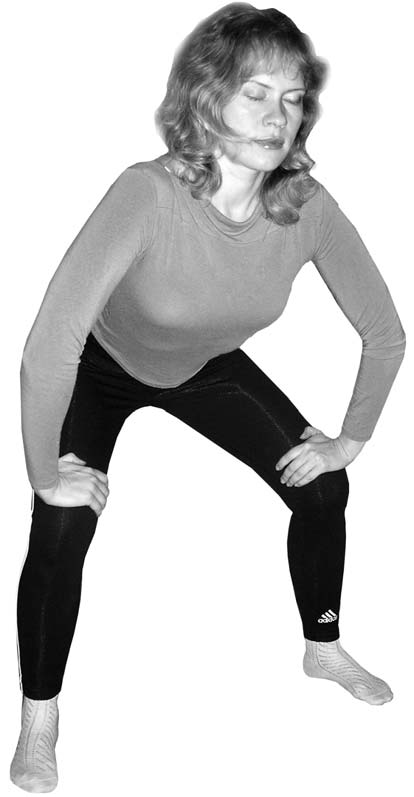
Advanced exercises and their energy influence
Mulabandha
Starting position. This exercise can be done practically in any po-
sition. In warming-up it’s ok to do it standing, but the biggest effect
it gives in padmasana (lotus posture, not even the half-lotus), because
groin muscles are specially stretched. The rest of starting positions
make no difference.
Technique. Concurrently squeeze your muscles of the anus
sphincter, the pelvic floor and of the genitals. This exercise can be done
in the quick tempo or with long holding of muscles.
Inside criteria of doing mulabandha correctly is the feeling that
all viscera «rise».
Uddiana bandha
(fisherman pose)
Starting position. This
pose makes exercises easier,
taking off the tension from
the belly.
Technique.
Exhale
fully, drawing your belly
«to the spine», slightly lift-
ing it to the ribs. Sometimes
it makes sense to do djvaladhara and Muladhara
bandhas at the same time. Inhaling, exit the fisher-
Fisherman
man’s pose, relaxing your belly. Uddiana bandha
pose
is usually repeated three times in a row.
Particularities. As it was already said, the inhalation should last
as long as the exhalation. There is no need to do bandha till everything
goes dark before your eyes and then to gasp for some air. The time of
doing should let you do the inhalation with no rush.
The action of bandhas is described above.
Uddiana bandha kriya
Starting position. As in the previous exercise.
Technique. After taking uddiana bandha relax your abdominal
muscles, so that your belly «falls out». Repeat several times, accelerat-
ing tempo. Ideally raise it with the speed up to 2 times a second. How-
ever it’s more important to find your our rhythm and to change tempo
so that you don’t get habituation.
133
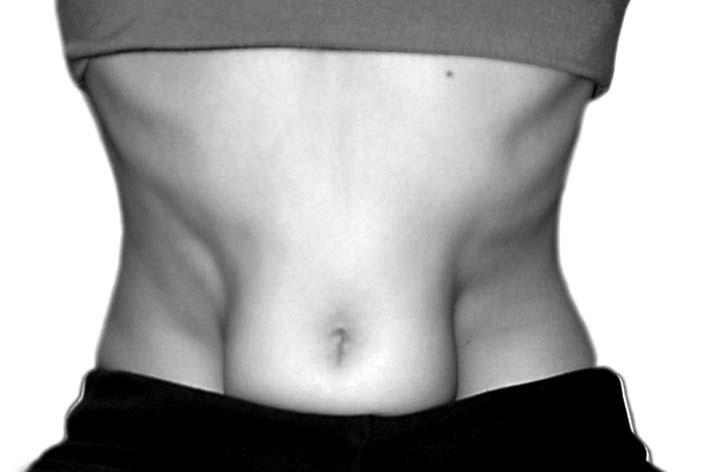
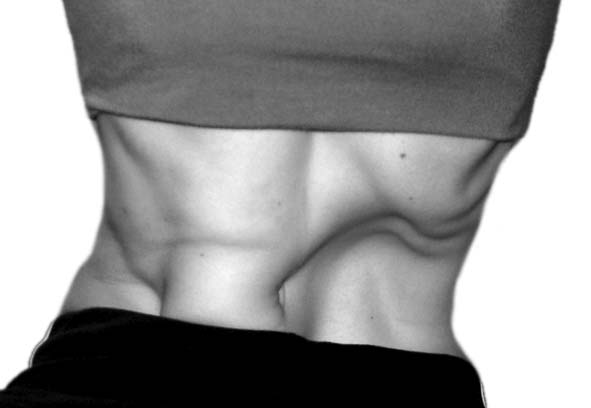
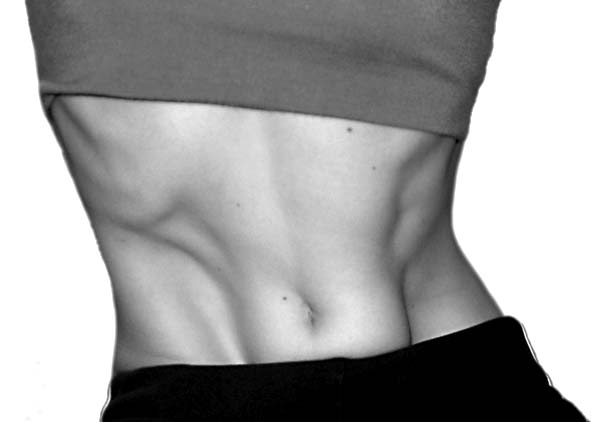
. Safronov. Yoga: Physiology, Psychosomatics, Bioenergetics
Nauli
Starting position. Fisherman’s pose.
Technique. Draw your belly in and throw out the rectus, then try
to revolve it. Once this muscle comes out, there will be no more prob-
lems. Your back must be straight — it helps the energy to go up.
Criteria. While doing nauli one must feel the heat lifting.
Particularities. In the first phase of doing this exercise you should
hold the djanaladhara bandha, otherwise the energy can move from
the head down. When the heat reaches the throat, djalanhara bandha
should be unlocked to let the energy come to the head. In this case
there is a feeling of «enlightenment» in the eyes, i.e. as if everything
became clearer. This feeling determines the duration of this exercise for
everyone personally.
WARNING! . Nauli raises the male1 sexual energy. In this case it is useful
for those who practice brahmacharia or sex without ejaculation — it pre-
serves from congestion causing prostatitis, but, if you don’t drive the energy
to the head, it easily falls back almost out of control.
Uddiana bandha, uddiana bandha kriya and nauli can be con-

















































